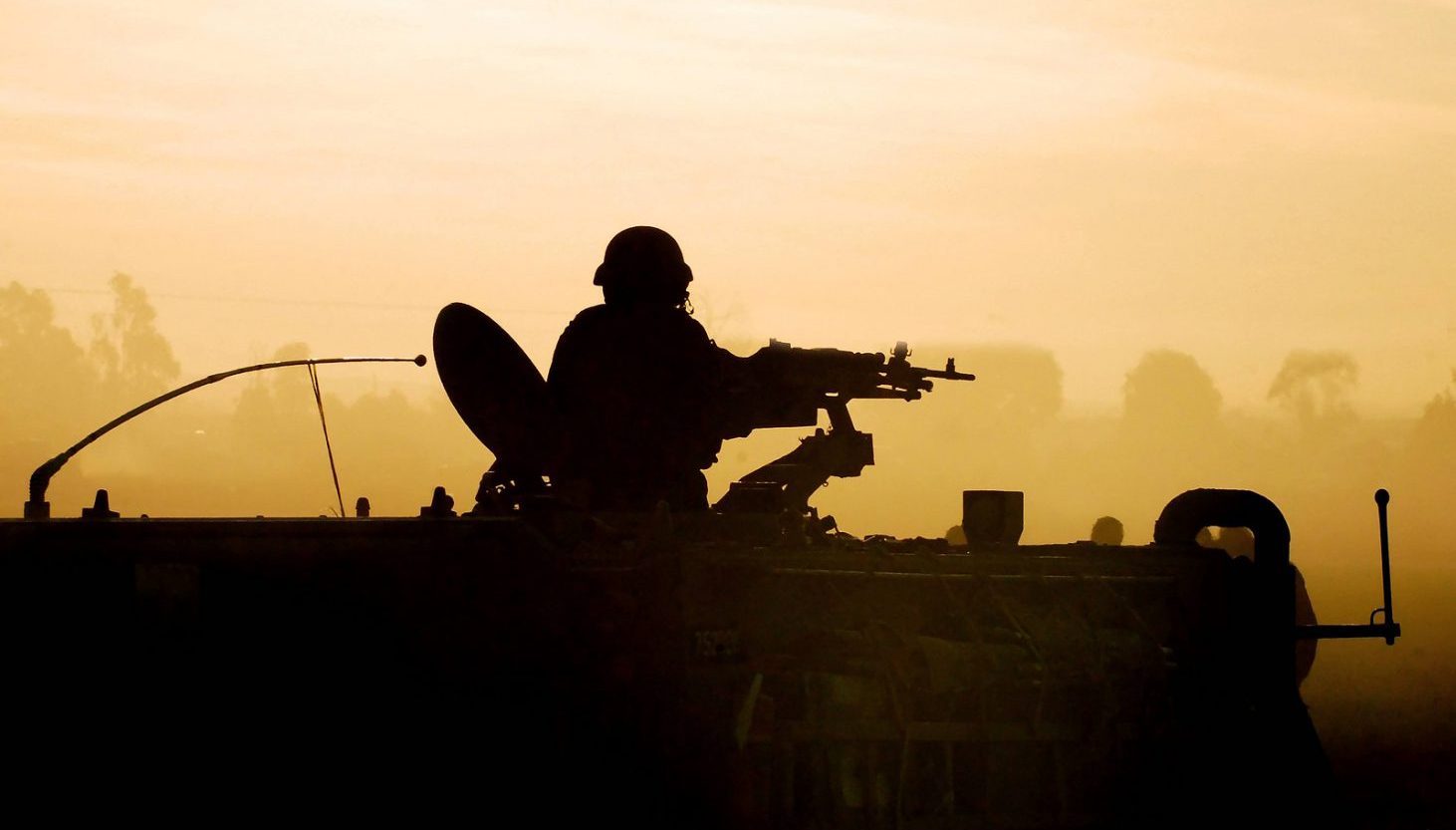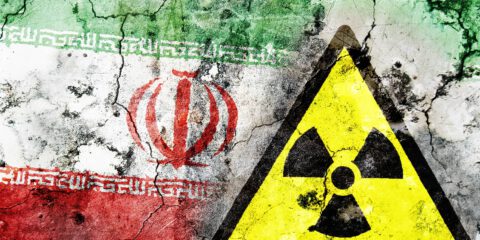Does Israel require that all presence of the Iranians be removed from Syria, down to the last proxy fighter? If so, then conflict between Tehran and Jerusalem is a near inevitability, since there is no chance of Iran acquiescing to this except by coercion. On the other hand, if the Israeli intention is to prevent the Iranians from transferring certain weapons systems into Syria — advanced anti-aircraft systems, ballistic missiles, drones — then conflagration may not be so imminent.
It is spring in Israel. On the face of it, all appears normal. Yet underlying the everyday is the hint of tension. The low buzz that presages violent events. We know it well in Israel and it has been all around for weeks.
Two nights ago, there was an eruption. The special forces unit of Iran’s Islamic Revolutionary Guard Corps launched 20 missiles at northern Israel. Israel’s Iron Dome shot down four of them. The others landed in Syria. The Israeli Air Force launched a counter-attack. Iranian storage facilities and logistics sites in Syria were targeted along with five Syrian air defence systems.
As the smoke cleared, an uneasy calm returned. Probably not for long.
A series of milestones is approaching in coming weeks, any of which could precipitate further strife. The extended period in which Israel managed to keep itself largely one step removed from the chaos of the Middle East seems to be drawing to a close.
Donald Trump announced this week he will withdraw the US from the nuclear deal with Iran. The stage is set for a return to open confrontation between the US and Iran.
The US has commitments in the region (in Iraq and eastern Syria, in particular) which would be vulnerable to violent pushback by Iran through its proxies.
Israel’s ongoing efforts to roll back Iranian gains in Syria will constitute an element of this larger contest. This, in turn, will increase the chance of confrontation between Israel and Iran.
As Israeli Housing Minister (and former general) Yoav Galant told Bloomberg News this week: “It’s clear that friction between Iran and the US can lead to a situation in which Iran decides to deploy Hezbollah against Israel … That’s their tool.”
Meanwhile, Prime Minister Benjamin Netanyahu expressed Israel’s readiness for such a confrontation, if it comes. “We don’t want an escalation but we are prepared for every scenario. We don’t want confrontation but if there needs to be one, it is better now than later,” he said following a meeting of Israel’s cabinet.
With the situation at such a point of tension, other events that would normally command centrestage are being relegated to a secondary role. Nevertheless, the opening of the new US embassy in Jerusalem on Monday is set to cause an uptick in tensions between Israelis and Palestinians. This will be followed on Tuesday by the culmination of Hamas’s six-week March of Return campaign in the Gaza Strip.
This series of marches to the border fence is intended to revive the fortunes of Hamas, whose Gaza domain is isolated and cash-strapped. Tuesday is also the anniversary of Israel’s declaration of independence and is remembered by Palestinians as the date of their Nakba (catastrophe).
It is possible there will be attempts to break through the border fence. Israeli communities are located as little as 1km from the fence, so the situation will be tense.
It is worth remembering that Gaza is not hermetically sealed off from the stand-off with Iran in the north. Tehran has its clients among the Palestinians, who may be directed to escalate the situation. The small Palestinian Islamic Jihad organisation is a wholly owned franchise of Iran. Hamas’s relations with Tehran are more complex and the movement sought in recent years to distance itself from the Iranian regime. Hamas Gaza leader Yahya Sinwar has worked to patch up relations over the last year and in August he declared that Iran was once again the largest backer of Hamas.
But it is the northern tier of Syria and Lebanon that remains by far the gravest concern for Israel. It is here the ambitions and agendas of Iran appear most directly set on a course of potential collision with the Jewish state.
Iranian assistance has been vital to the cause of Bashar al- Assad since the uprising against him in 2011. The Syrian President, whose regime rests on a narrow platform of sectarian support, was beset from the beginning by a problem of insufficient loyal manpower. It is the Iranians, not the Russians, who addressed this vital issue throughout the war.
However, Iran, in its usual fashion, did not elect to strengthen the existing Syrian Arab Army. Rather, in accordance with similar methods pursued in Iraq and Lebanon, it has preferred to create its own Revolutionary Guards-controlled structures in Syria. These defend the Assad regime, to be sure, but they are not under its sole control. Thus, Iran organised and created the National Defence Forces, consisting of Syrian volunteers, mainly from non-Sunni communities and now numbering 50,000 to 60,000 fighters.
Iran also mobilised its proxies in the region and brought them to Syria to plug the manpower gap. Thus, there are today about 6000 Lebanese Hezbollah fighters on Syrian soil, along with perhaps 3000 Revolutionary Guards personnel and an additional 10,000 to 15,000 members of other Iran-supported Shia militias from Iraq, Afghanistan and Pakistan.
As the rebellion against Assad has continued to lose ground, so the construction of Iranian infrastructure in Syria has continued. Hezbollah in Lebanon and the Popular Mobilisation Units in Iraq indicate that Iran’s version of assistance is not dismantled when the threat has subsided.
Israel is concerned that this infrastructure, with its contiguous land link to Iraq and thence to Iran itself, is intended primarily for use as a tool of pressure and violence against the Jewish state. Iran is noisily in favour of the destruction of Israel. It wishes to achieve this goal through a long-war strategy of attrition and harassment. Entrenchment in Syria would significantly increase the Iranian ability to pursue this strategy.
While the local and regional militias pose a challenge, Israel’s main worry is the hardware that Iran is seeking to import and base in Syria. Consolidation of this infrastructure — unmanned aerial vehicle bases, surface-to-surface missiles and anti-aircraft batteries — appears to be what Israel is most determined to prevent.
On April 9, Israeli aircraft struck at a drone facility maintained by the Revolutionary Guards’ Aerospace Force at the T4 base near Palmyra. Fourteen people were killed, among them seven Iranians, including a Revolutionary Guards colonel.
On April 30, Israeli aircraft carried out a larger-scale raid on two points — the 47 Brigade base south west of Hama, and the Nayrab military air base close to Aleppo. The New York Times reported that the strikes killed 16 people, including 11 Iranians, and destroyed 200 missiles.
On May 9, following reports of “irregular Iranian movements” in southern Syria, explosions were heard south of Damascus. Israel opened public bomb shelters in the Golan Heights. Regional media reported Israel attacked an army base south of Damascus, where Iranian personnel were based. Nine militiamen were killed, according to the usually reliable Syrian Observatory for Human Rights.
Then, in the early hours of May 10, the Iranians launched their 20 missiles, and Israel responded. The Iranian strike was not successful, and it is not clear whether Tehran will consider it to have constituted sufficient retaliation for the Israeli action on April 30. Given the scale of the Israeli response, this seems unlikely.
What form is further Iranian action likely to take?
Iran has a number of options. It has a global terror infrastructure and might seek to attack an Israeli facility or an Israeli or Jewish target abroad. In the past, Tehran and Hezbollah have sought retribution in this way. The 1994 attack on the AMIA Jewish community centre in Argentina and the 2012 murder of Israeli tourists in Bulgaria are examples.
Alternatively, Iran could instruct its Lebanese Hezbollah proxies to attack Israeli forces across the border from Lebanon. This is how Tehran sought to retaliate for the killing by Israel of a number of Revolutionary Guards and Hezbollah personnel close to the Golan Heights in 2015.
Israeli planners were expecting Iran’s retaliation for the nine militiamen killed on May 9 was likely to be carried out in Syria, probably with the help of Shia militia personnel on the ground. It was not the first time Iranian personnel have been killed by Israel on Syrian soil. But it was the first time Iranian facilities, not those of proxy groups, were targeted. The Iranian action on May 10 was the first time Israel was directly targeted in a real-time conventional military operation led by the Revolutionary Guards. This is likely to set the pattern.
So where is all this heading? Israel’s Defence Minister Avigdor Lieberman has said that allowing Iran to consolidate its infrastructure in Syria would be “agreeing to the Iranians placing a noose around our necks”. This, he said, would be prevented “at all costs”.
It is not entirely clear, of course, what “consolidation”, “entrenchment” and their prevention actually mean, or could entail. Does Israel require that all presence of the Iranians be removed from Syria, down to the last proxy fighter? If so, then conflict between Tehran and Jerusalem is a near inevitability, since there is no chance of Iran acquiescing to this except by coercion. On the other hand, if the Israeli intention is to prevent the Iranians from transferring certain weapons systems into Syria — advanced anti-aircraft systems, ballistic missiles, drones — then conflagration may not be so imminent.
Iran has an interest in keeping to what it is good at: developing paramilitary proxy political-military organisations. What it is much less good at is conventional warfare. It has a poorly equipped, Cold War-era air force. It possesses ballistic missiles capable of reaching Israel, to be sure. But Israel has in recent years developed with the US some of the most advanced missile defence systems in the world. Iran’s own defences, meanwhile, are far less developed.
This means that Iran may well prefer to absorb Israeli strikes, carrying out a token retaliation for form’s sake. Such an approach would derive not from pacific intentions. Rather, the Iranians would calculate that it is in their interests to continue to quietly build their strength in Syria while absorbing periodic Israeli disruptions. Since the Iranians may well be engaged, as in Lebanon and Iraq, in a project concerned with the long-term transformation of these countries into clients or puppets, the immediate settling of scores may not be deemed of paramount urgency.
Of course, this raises the question of whether Israel will wish to acquiesce to the pursuit of such an Iranian strategy, with all it implies for the security of Israel. In the meantime, following the fire and smoke of the night of May 10, and until the next move, we are back to the waiting period.
Published in The Australian, 12.05.2018
JISS Policy Papers are published through the generosity of the Greg Rosshandler Family.
photo: Rafael Ben Ari, Bigstock









 - בניית אתרים
- בניית אתרים